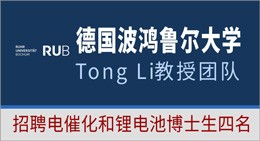Nature Communications ( IF 14.7 ) Pub Date : 2023-11-29 , DOI: 10.1038/s41467-023-43403-y
Michal Nemergut 1, 2, 3 , Daniel Pluskal 1 , Jana Horackova 1 , Tereza Sustrova 1 , Jan Tulis 1 , Tomas Barta 4 , Racha Baatallah 5 , Glwadys Gagnot 5, 6 , Veronika Novakova 1, 2 , Marika Majerova 1, 2 , Karolina Sedlackova 1, 2 , Sérgio M Marques 1, 2 , Martin Toul 1, 2 , Jiri Damborsky 1, 2 , Zbynek Prokop 1, 2 , David Bednar 1, 2 , Yves L Janin 7 , Martin Marek 1, 2
|
|
NanoLuc, a superior β-barrel fold luciferase, was engineered 10 years ago but the nature of its catalysis remains puzzling. Here experimental and computational techniques are combined, revealing that imidazopyrazinone luciferins bind to an intra-barrel catalytic site but also to an allosteric site shaped on the enzyme surface. Structurally, binding to the allosteric site prevents simultaneous binding to the catalytic site, and vice versa, through concerted conformational changes. We demonstrate that restructuration of the allosteric site can boost the luminescent reaction in the remote active site. Mechanistically, an intra-barrel arginine coordinates the imidazopyrazinone component of luciferin, which reacts with O2 via a radical charge-transfer mechanism, and then it also protonates the resulting excited amide product to form a light-emitting neutral species. Concomitantly, an aspartate, supported by two tyrosines, fine-tunes the blue color emitter to secure a high emission intensity. This information is critical to engineering the next-generation of ultrasensitive bioluminescent reporters.
中文翻译:

阐明 NanoLuc 荧光素酶的机制和变构行为
NanoLuc 是一种卓越的 β 桶折叠荧光素酶,于 10 年前被设计出来,但其催化性质仍然令人困惑。这里结合了实验和计算技术,揭示了咪唑并吡嗪酮荧光素与桶内催化位点结合,而且还与酶表面上形成的变构位点结合。在结构上,通过协调的构象变化,与变构位点的结合可防止同时与催化位点的结合,反之亦然。我们证明变构位点的重构可以增强远程活性位点的发光反应。从机理上讲,桶内精氨酸与荧光素的咪唑并吡嗪酮成分配合,通过自由基电荷转移机制与 O 2反应,然后它还将所得的激发酰胺产物质子化,形成发光中性物质。与此同时,由两个酪氨酸支持的天冬氨酸微调蓝色发射器以确保高发射强度。这些信息对于设计下一代超灵敏生物发光报告基因至关重要。




































 京公网安备 11010802027423号
京公网安备 11010802027423号